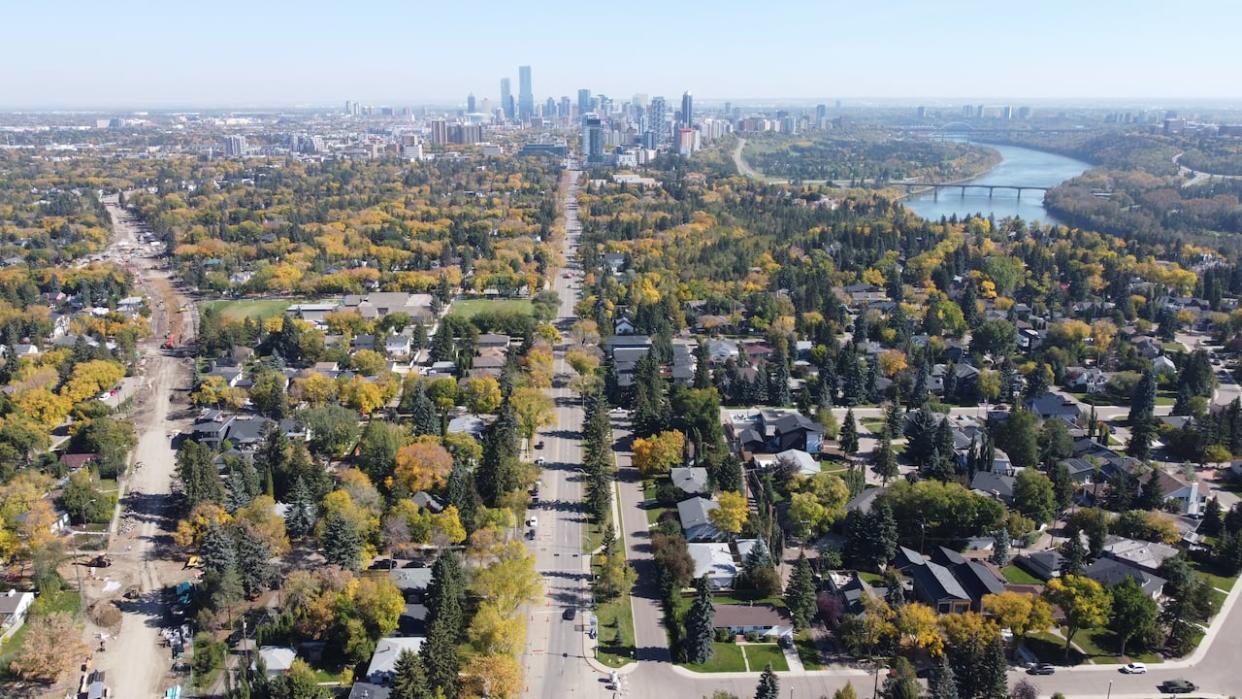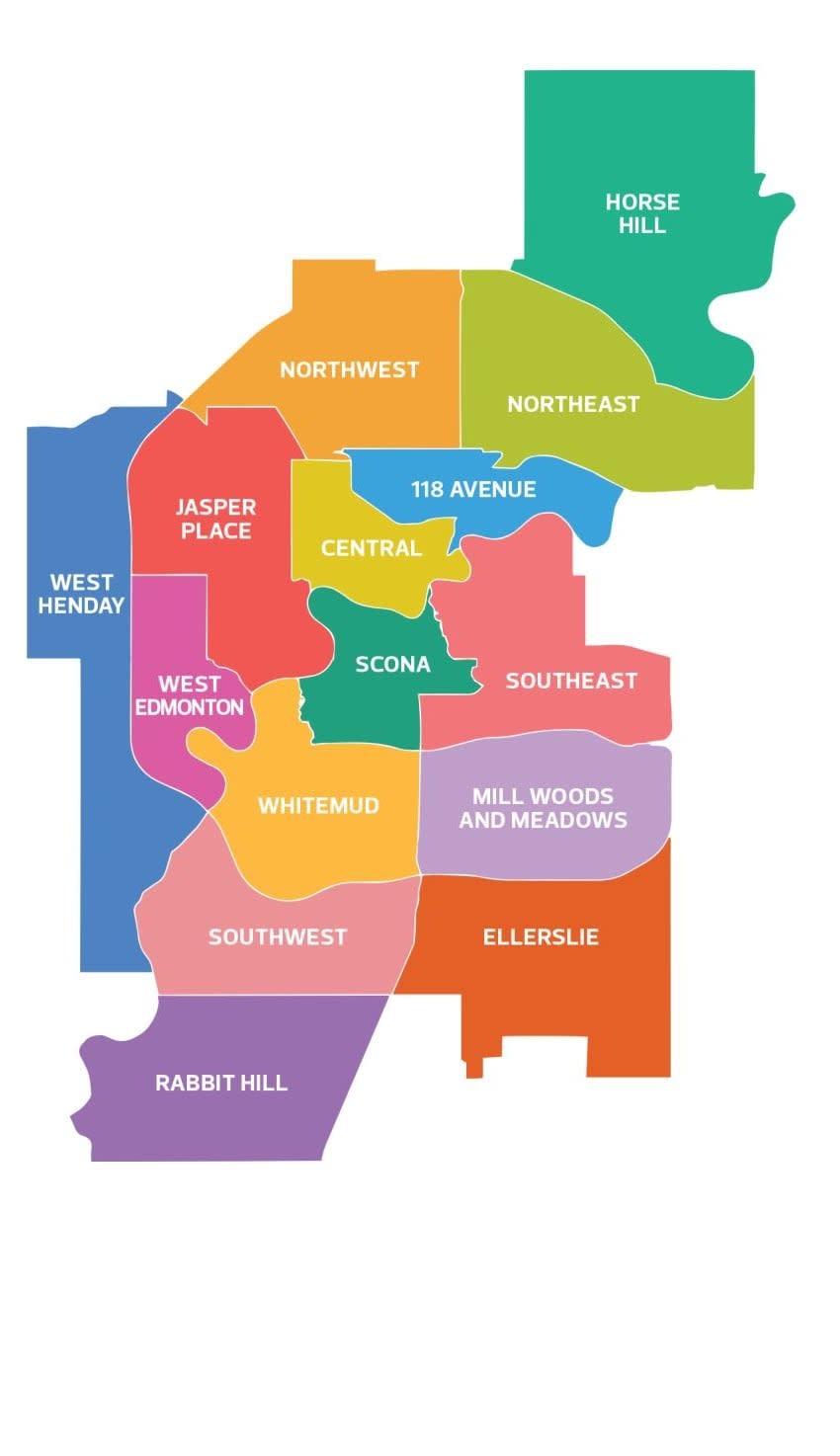City council gets input on proposed district policy as Edmonton plans for 15-minute communities

Part of a global agenda, a boon for students and a threat to natural spaces: Edmonton's proposed district plans drew a wide variety of opinions during public hearings at city hall Tuesday.
Council has scheduled three days of discussion on the district policy and accompanying district plans. It's the next phase of Edmonton's urban planning overhaul, following new zoning rules that went into effect this year, as the city prepares to grow to two million people.
More than 80 speakers have signed up.
Introduced in The City Plan adopted in 2020, districts are a collection of neighbourhoods with the goal of meeting most residents' daily needs within a 15-minute walk, bike or transit trip from their home.

The city is planning for future development in 15 different districts across Edmonton as the population grows. (City of Edmonton)
"It was never the city's intention to rely solely on the city plan's eight-and-a-half by 11-inch maps for all of our planning needs," City of Edmonton senior planner Sean Bohle said during a presentation from administration.
"For all of its strengths, the city plan does not provide residents, businesses, administration or council with enough detail."
Fifteen districts are being presented to council for consideration. Within them are urban centres of varying scope known as nodes, as well as primary and secondary corridors that support more density along certain routes.
Development planners would consult with the relevant district plan when needing to consider a development permit.
District plans do not themselves change zoning but do clarify the exact locations of these nodes and corridors identified in the overarching city plan — details that could then be used in a rezoning application to allow for more dense buildings.
The city is looking at targeted rezonings for some of the 19 nodes and corridors identified as priority growth areas, although communities and businesses in the affected areas will still have an opportunity to provide input before going to a public hearing for a decision.
Administration is also proposing the removal of 57 local plans to further align the planning system with the city plan.
LISTEN | Edmonton aims to create 15-minute communities through urban planning:
Industry support
Several people from the development industry spoke in favour of the district plans, with some caveats.
Alicia Wellington from BILD Edmonton Metro, which has 500 member companies, said more clarity is needed regarding the implementation of the districts with local plans.
"There's a concern that good development ideas could be delayed or even obstructed," she said.
Alric Reid, vice-president external for the Students' Association of MacEwan University, said the focus on building around transit could make a difference for the student population he represents.
"We have 40 per cent of our students who are not able to pay rent above $500. And we believe that the proposals … will go a far way in helping our student population."
Reid said he would like to see affordable housing mandated in planning, although he recognized Edmonton's ability to direct inclusionary zoning is set to be repealed from the city charter by the province.
Opposing voices
Among the speakers opposed was Raquel Feroe from the Edmonton River Valley Conservation Coalition, who says protections need to be mapped out to preserve natural areas.
"The policy and plans are at odds with existing open space policies and practices, including those outlined in Breathe: Edmonton's Green Networks Strategy."
Representatives for the Edmonton Federation of Community Leagues did not take a position on specific district plans — leaving that to individual leagues — but did have concerns about the policy.
Laura Cunningham-Shpeley, the organization's executive director, said sections concerning allowable heights were not consulted on and need to be changed.
"We have been presented with an amendment that not only significantly broadens the potential for larger development across the city, but diminishes the league's trust in the city and undermines a collaborative spirit that we have worked so hard to create on issues of development and planning."
Several speakers decried 15-minute cities as part of a global agenda. The concept has been the subject of conspiracy theories in cities around the world, including misinformation that it's a form of government takeover.
The new charter bylaw will be ready for first and second readings after the public hearing.
Administration must send reports to the Edmonton Metropolitan Region Board before returning to council for the third and final reading.

